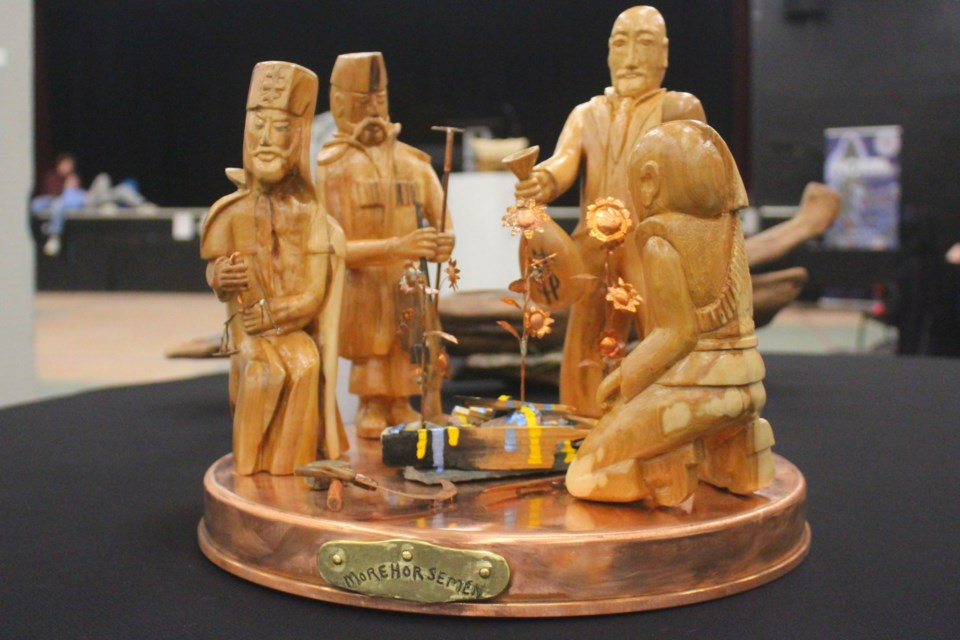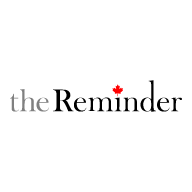Doug Dmytriw’s sculpture skills have gotten a lot of people talking.
The Flin Flon sculptor and three-dimensional artist is the newest honouree for the Northern Juried Art Show’s top jury prize honour.
Dmytriw received the regional show’s “Best in Show” ribbon for his sculpture entitled “More Horsemen”. The piece will also be entered in the Northern and Rural Juried Art Show in Winnipeg later this year, where it will be exhibited along with works from other small-town Manitoba artists.
Hearing his name announced for the Best in Show award made Dmytriw freeze up at first, but he appreciates the recognition for him and his work. Dmytriw has entered pieces in the show in the past, even holding an exhibition at the NorVA Centre in Flin Flon, and has received several honours for his work.
“I forgot to move for a second,” he said.
“It was really cool - you recognize your name and away you go. I’m looking at about 70-85 hours of work going into a piece, so it’s really cool when it is appreciated like that.”
The piece itself features four figures on a bronze base, with each figure designed by Dmytriw in a similar style to Slavic religious iconography. The figures are meant to be, according to Dmytriw, a modern manifestation of the Biblical Four Horsemen of the Apocalypse.
In two books of the Old Testament, in the New Testament book of Revelation and in longstanding Christian lore, the riders are described as bringers of the end of days - informally, the quartet is named as War, Pestilence or Conquest, Famine and Death. Dmytriw describes the figures as horsemen called in alongside the traditional four - hence the reference to "more horsemen" in the title.
Within the middle of the piece, encircled by figures resembling an Orthodox priest, a cossack, a soldier and a businessman in a suit, is a pile of rubble with Ukrainian gold and blue colours splashed upon it. A shoot of sunflowers - a symbol of rebirth and defiance often used by Ukrainians during the war - are found growing out of the base, cast in bronze.
“These are more riders. This is not the end apocalypse, these are more riders that sort of put us towards an apocalypse. Collectively, that's what that piece means to me,” said Dmytriw.
“It’s kind of a warning.”
For Dmytriw, whose father immigrated from Ukraine to Canada in the 1920s and whose family settled in the north in the 1930s, the inspiration for the piece was seeing the ever-escalating conflict in his family’s homeland.
“For something like this, it’s nice to do a tribute to my father's country,” he said.
The creation of the piece itself comes with its own story - Dmytriw created the piece not long after sustaining severe injuries after an accident at home.
“Three days after I retired, I took a dive off a ladder and wound up in the Health Sciences Centre [in Winnipeg],” he said.
In the fall, Dmytriw broke his nose and arm, ruptured a kidney and suffered a spinal fracture - he says he is now in full health, but said much of the creation of “More Horsemen” took place during his recovery, using what physical exertion he could muster up.
“There's not a lot of effort involved, you know. It's sharp, sharp knives, and hitting things in the right place. Power tools make a big difference. It just happens,” he said.
Layers of imagery are stacked on the piece and interpretations of it have been varied. Juror Diana Thorneycroft said she had originally interpreted Dmytriw’s piece differently, seeing as relating more with Ukrainian politics than the apocalyptic meaning.
“Any work of art is very subjective - your artistic response to a piece is subjective,” said Thorneycroft during the awards announcement at the show June 2.
“When I was looking at it, I looked at the several figures and I kind of figured them out, but when I thought of ‘More Horsemen’, I thought, ‘Oh, this is [Ukrainian president Volodymyr] Zelenskyy asking for more military weapons from the rest of the world. Doug said, ‘That's a really great interpretation’… I wasn't completely on line with his thinking, but it was close enough and I was able to give Doug a different interpretation of his work.”
The interpretations have been a new experience for Dmytriw as well, who has heard several new thoughts and theories about how passers-by view his work - critiques he has appreciated.
“It's like an artist's dream. It's really cool when you can actually make a piece that creates that much activity around it. For me, that's what it's about,” said Dmytriw.
“It’s really neat. I found that by going there and a lot of people asking questions, it’s very good because they're all arriving at the same conclusions - something like this could happen anywhere. It just happens to be happening in Ukraine today.”
Other local competition winners included Tom Dubreuil and Laura Bryson finishing first and third respectively in the painting category, Ann Marin, Megan Dupas and Lois Fisher sweeping the podium for the watercolour category and Rosimeire Anjos and Matthew Enns finishing first and second in drawing and printmaking.
Patricia Evans and Keely Patterson finished second and third in the fibre art category, while three-dimensional art top spot went to Alistair Callegair, with Kari Lentowicz finishing third in the category. Randy Beever’s Chuckwagon won a top spot in a separate three-dimensional art category.
Noelle Drimmie finished first and George Fontaine third in photography, while Zoey Winterton finished second in the youth category, ages 9-12. Three Flin Flon-area artists - Louisa Bone, Gretchen Wendlandt and Cheylynn Stevens - finished on the podium for the youth ages 13-17 years group.




